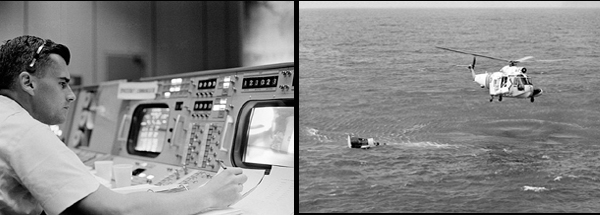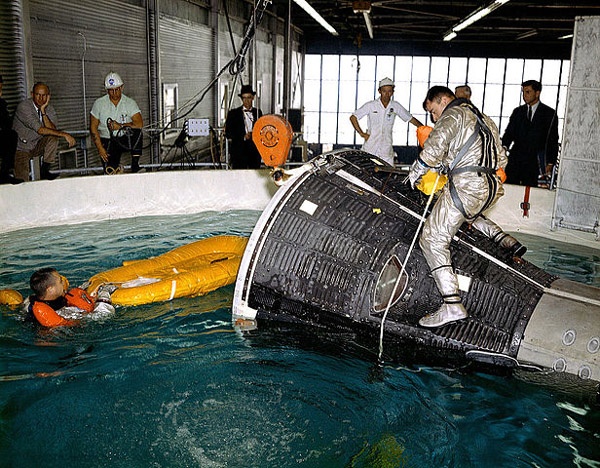|  NASA's
two-man Gemini spaceflights demonstrated that astronauts could change their capsule's
orbit, remain in space for at least two weeks and work outside their spacecraft.
They also pioneered rendezvous and docking with other spacecraft. NASA's
two-man Gemini spaceflights demonstrated that astronauts could change their capsule's
orbit, remain in space for at least two weeks and work outside their spacecraft.
They also pioneered rendezvous and docking with other spacecraft.
All were
essential skills to land on the moon and return safely to Earth. Veteran
Mercury astronaut Grissom was selected as command pilot of Gemini III, making
him the first person traveling into space twice. Joining Grissom was Young, the
first member of the second group of NASA pilots to fly in space. Young would go
on to become the first person to make six spaceflights, including commanding Apollo
16 during which he walked on the moon. He also commanded STS-1, the first shuttle
mission. Gemini III's primary goal was to test the new, maneuverable spacecraft.
In space, the crew members fired thrusters to change the shape of their orbit,
shift their orbital plane slightly, and drop to a lower altitude. The revolutionary
orbital maneuvering technology paved the way for rendezvous missions later in
the Gemini Program and proved it was possible for a lunar module to lift off the
moon and dock with the lunar orbiting command module for the trip home to Earth. It
also meant spacecraft could be launched to rendezvous and dock with an orbiting
space station. 

|